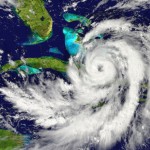Hurricane Sandy and IAQ series: Top 5 Ways to Prepare For Extreme Conditions
In this post we continue our Hurricane Sandy and indoor air quality (IAQ) series as we discuss the top five ways to prepare for extreme conditions. We’ll end the series with a post that offers our infographic about IAQ and Hurricane Sandy.
 Natural disasters like floods, hurricanes, tornadoes and other extreme conditions affect thousands every year, according to FEMA. Staying alert to potential hazards and knowing how to protect your facility and occupants will help you to prepare before the event and recover once it’s over.
Natural disasters like floods, hurricanes, tornadoes and other extreme conditions affect thousands every year, according to FEMA. Staying alert to potential hazards and knowing how to protect your facility and occupants will help you to prepare before the event and recover once it’s over.
Here are our top five ways to prepare for extreme conditions:
- Meet with your insurance agent and understand what your insurance policy covers. Schedule a time to meet with your insurance agent annually. If you live in an area prone to natural disasters, be sure you have the extra policies necessary to protect your facility. The FEMA-NOAA interactive flood impact map, which has amassed data about past floods, can help you determine your flood risk. You can learn more about the Flood Insurance Protection Program at www.floodsmart.gov. FEMA offers an additional disclaimer about flooding: even if your facility is in an area considered a low flood risk, that risk may change. Flooding risk is based on lots of factors including rainfall amounts, river flow, topography, tidal surges and changes resulting from new construction and developments.
- Have documentation. Take photos or video of each room, and create a room-by-room inventory to help recoup insured losses. Document serial or model numbers. Thorough documentation will help make the insurance filing process smoother. If items are documented, you can also remove wet, moldy items immediately without having to show them to your insurance agent first.
- Build an emergency kit. Have your kit ready before an emergency situation arises. In an emergency, you may only have a moment’s notice to evacuate. An emergency kit should contain enough food, water and other supplies to last for at least 72 hours. FEMA offers a list of recommended supplies, along with other information about building a kit at www.ready.gov/build-a-kit.
- Protect your facility against water damage as much as possible. FEMA says to raise electrical components, if possible, to avoid contact with flood waters. Repair cracks in ceilings or foundations. Whenever possible, construct barriers that can prevent flood waters from entering the building.
- Secure your facility. If a disaster is impending, take appropriate measures to secure your facility, in hopes of lessening the damage. Particularly in cases of hurricanes and other high wind situations, FEMA recommends covering all of the windows with permanent storm shutters or boarding up the windows with marine plywood; installing straps to secure the roof to the frame; and reinforcing garage doors.
Next Steps:
- Subscribe to our blog to receive the full blog series via email and stay informed about the latest HVAC news and insight.
- Stay up to date on facility maintenance tools such as chiller tube cleaners, boiler tube cleaners, hose/pipe cleaners, descaler systems, industrial vacuums, commercial pressure washers, and drain cleaners.

